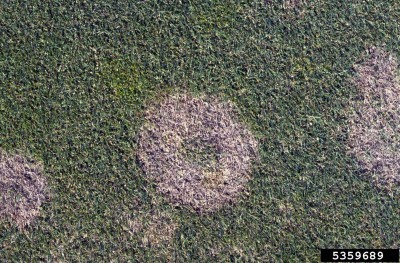






Spring is a time of new beginnings and the awakening of lots of the growing things you’ve missed all winter. When the receding snow reveals a badly damaged lawn, many homeowners despair – but try not to worry, it’s only snow mold. This fungus is unsightly, but is easy to manage for homeowners of all skill levels. Read on to learn more about snow mold and how to manage it on your lawn.
As the snow melts for the last time this spring, you may notice some unusual brown rings and matted areas on your lawn. This is the calling card of one of the more frustrating turfgrass diseases: snow mold fungus. Snow mold in grass is a problem that seems to defy logic entirely. After all, isn’t it too cold under the snow for fungi to grow?
Snow mold is actually a group of fungal diseases caused by pathogenic fungus that lie dormant in the soil until the conditions are just right to invade nearby grasses. Snow mold can tolerate more cold than most members of its Kingdom and it thrives in the conditions present under a thick blanket of snow. Because of the insulating properties of snow, the ground beneath a heavy coat of the white stuff can be completely unfrozen despite freezing air temperatures.
When this happens, the snow melts ever so slowly into the grass, creating a cool and incredibly humid environment for the snow molds to take hold. Once all that snow is finally thawed, a lawn infected with snow mold will show new straw-colored patches, rings or matted areas. It’s rare that snow mold will kill the crowns of your turfgrass, but it preys heavily on the leaves.
Snow mold treatment starts with a thorough dethatching of your lawn. After all, the thatch helps hold moisture against the grass, so removing as much as you can at the beginning of the season is a good idea. Watch the grass for the next few weeks after dethatching. If you get new, unaffected growth, you’ll only need to keep the grass in good condition in case snow mold returns next season.
Grass that has died completely, on the other hand, will need to be overseeded. Kentucky bluegrass and fine fescue have shown some resistance to certain types of snow mold, and they may be a good solution if snow mold is a chronic problem in your area.
Once you’ve got your lawn re-established, it’s important to maintain it in a way that discourages snow mold in the winter.
Copyright © www.100flowers.win Botanic Garden All Rights Reserved